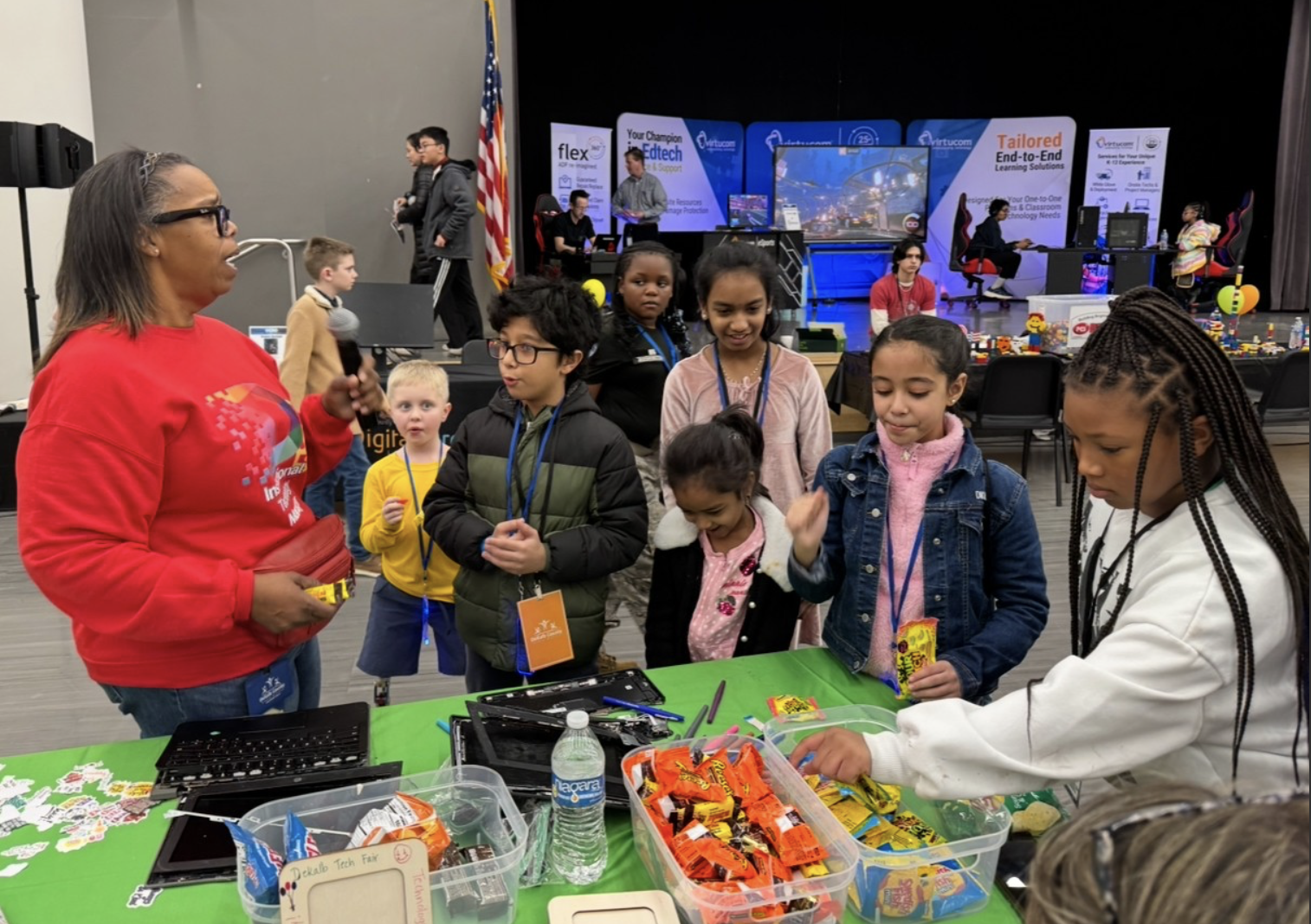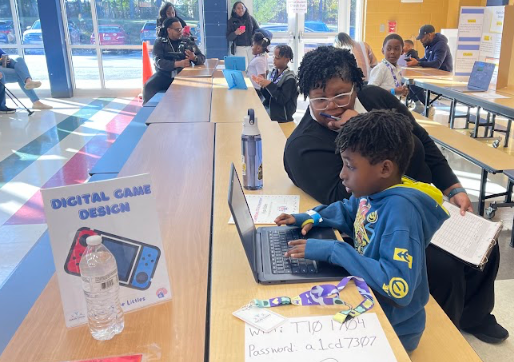3 Tips to Create An Impactful Student Focus Group
Innovative Leader Award - DeKalb County School District leaders Terri Webb and Natasha Lawyer encourage students to dream about what edtech they want, and then work to make those dreams come true.

“When you dream of something, you are really putting what your wants are into reality,” says Terri Webb, Manager of Instructional Technology at Georgia’s DeKalb County School District (DCSD).
So rather than guess at the needs and wants of students when it comes to the education technology they might learn with best, Webb and her team went directly to the source.
“Instead of the district pushing devices, the students created videos telling us what their dream device looks like, the different features within, how it should be used and carried,” she says. “All the things your parents would tell you, but you don't listen because you're listening to your friends who are much smarter than adults.”
The result was the Digital Dreamers program, which launched in 2018 when the district instituted their 1:1 initiative for middle to high schools (2:1 for elementary).
Webb, along with Instructional Technology Coordinator Natasha Lawyer, were recently recognized for their efforts with the Innovative Educational Technology Specialists Award at the Southeast Regional Leadership Summit as part of the Tech & Learning’s Innovative Leader Awards.
Webb and Lawyer discuss their impressive Digital Dreamers program and their other edtech efforts, plus offer three tips to create your own student focus group to inform tech choices that resonate.
Ambassadors Take Charge

Enlisting student input has long been key in the district, including starting a student AI Cohort and a Hackathon focused on the school portal design.
Tools and ideas to transform education. Sign up below.
“It was so impressive! We said, ‘Let's stop asking the leaders what they want, the students will empower us to give them what they need to have fun while learning,’” says Webb. “Accessibility features, AI, cybersecurity—they even spoke about empathy between one another in the classroom. They wanted us to recognize that not all students can afford Apple devices and flashy tools.”
Insight from students refocused the team to help students with the tools they had.
“We saw students teach one another what a certain tool is, the purpose of the tool, and how we maintain a safe digital playground,” says Webb. “These students in turn became our ambassadors.”
Then a surprising thing happened. The ambassadors decided they didn’t really need much school leadership.
“We were trying to start a club to help students fix the Chromebooks. The students said, ‘We don't need to fix the Chromebooks, we need to teach the teachers how to use the Chromebooks,’” says Webb. “It was really cool—‘In Ms. So-and-so's class, we have to show her how to share her screen or a document.’ They shared what we need to know to support them.”
Tech for Littles

Reaching students when they’re young helps start their tech journey in a positive manner.
“We built Magical Moments with Microsoft—a virtual summer program that allows second-to-eighth grade students to play with tech,” says Webb. “They use Microsoft to build apps and games. We wanted to expand and give the ‘littles’ a taste so we chose Digital Game Design, Robotics, Video Production, Multimedia Apps and Graphic Design categories. We asked the schools to try it out, hoping for 30 students. We got over 300 applications. We now have pre-K students podcasting, first graders building video games—creating serious projects and presenting their work to judges.”
Holding tech-celebratory events can lead to big things in the district and beyond.
“Our Tech Competition is a wonderful opportunity for students (grades 3-12) to have their own voice and choice in sharing their knowledge,” says Lawyer, who co-directs the event. “They showcase their tech skills from the classroom, gaining real world experience of presenting in front of a judge to show how they have transformed over this school year.”
“When I led the Tech Competition, we were excited to get 200 students to register,” says Webb. “Natasha looked at the data to see which areas of the district we were missing and personally went into the schools to explain the event. To expand it to over a thousand students in three years is phenomenal.”
“Equity was a big component,” says Lawyer. “We saw disparity with some schools who weren't being represented, so we targeted that group to say, ‘Hey, you deserve to be a part of this as well!’ We knew they were doing the work. When you hear ‘tech competition,’ it can seem so abstract or complex you feel like your students can't do it. Once we really got in the trenches, it opened teachers’ eyes.”
The district enlists digital learning team liaisons and volunteer teacher sponsors. Interested students visit a sponsor who works between the school and parent to make sure they get the work done through an appointment system or in computer labs with a dedicated teacher.
“It’s amazing to still get teachers passionate about teaching and learning without putting a dollar amount to it, because they care so much about the students,” says Webb. “Busy principals are overwhelmed, so we approach them with a ‘wow moment’ in their building. They get excited, ‘Oh! my school is doing this?’ They then support us even more.”
At Techpalooza, the district brings in vendor partners to share what’s new with students and community stakeholders.
“We feature interactive presentations, with new tech students can touch and feel to really get their curiosity going,” says Lawyer. “Inviting the community fosters conversation with parents. grandparents, cousins, siblings—everyone comes to support their students.”
Pipeline to Profession

Engaging a larger audience can result in unexpected benefits.
“One ninth grader has been a Tech Competition first-place winner for three or four years,” says Webb. “He emailed me with a business plan. He recreated an app we use for our event visitors in a way that the students can log in and be notified when it's their time to present. He knew he couldn’t get paid for the tech, so he negotiated to have his own professional table as a featured person at Techpalooza. He presented to vendors and leaders, sharing his resume and LinkedIn information.
”The kid is a businessman at ninth grade, a professional before he can even drive! After the Techpalooza, vendors and tech companies were begging to come in and support our students saying, ‘How can I create a scholarship for this kid?’ They want to nurture and prepare him for possibly working with their company. That’s what I call ‘pipeline to profession.’”
Webb says it all stems from open communication and listening to students.
“When you go to a restaurant or shop in your community, you know that that's a student that came from your school,” she says. ‘I’m always talking to everybody, ‘What school did you go to? What did you learn? What do we need to do next?’ And they tell us.”
3 Tips to Create An Impactful Student Focus Group
Webb and Lawyer share their advice for how to use students to support students.
- Embrace the personality of the student. Allow them to just talk. Listen to the frustrations, listen to the excitement, listen to everything. Then validate their feelings and concerns by showing interest and feedback on at least one piece of what they're saying, so they understand you support them and that their thoughts matter.
- Be open minded. Sometimes students can surprise you with the depth of their knowledge and observations in the classroom regarding tech that works and when it could work if handled better by teachers. Let them give you advice and then navigate that advice with the students.
- Offer space and opportunity to share. Give students the opportunity to talk to leaders and decision-makers. A lot of times people making tech choices don’t have the opportunity to sit in front of students. Creating a student advisory committee space where kids can speak—about the tech, the devices, what they would like to see in the classroom—can change the game. We can learn from them.
The Tools They Use
- Microsoft
- Ignite U
- Chromebooks
Sascha has nearly two decades of experience as a freelance journalist writing for national magazines, including The Washington Post, LA Times, Christian Science Monitor, National Geographic Traveler, and others. She writes about education, travel and culinary topics.

